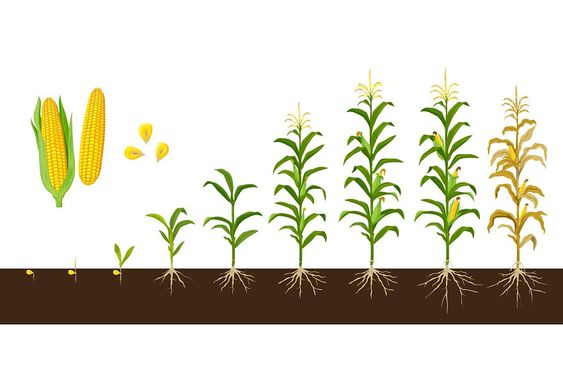Stages of Maize Growth
Here's a detailed, step-by-step explanation of the stages of maize growth from seed planting to matured maize ready for harvesting.
Odio, Zach
5/22/20242 min read


Stages of Maize Growth Life Cycle
Stage 1: Planting
Soil Testing: Test the soil for pH, nutrient content, and fertility. Adjust the soil conditions if necessary (e.g., by adding lime or fertilizers).
Planting Depth: Plant the seeds at a depth of about 5 cm in well-drained soil.
Spacing: Maintain a spacing of about 20-30 cm between plants and 70-90 cm between rows to ensure adequate sunlight and reduce competition for nutrients.
Stage 2: Germination (5-10 days after planting)
Emergence: The seed absorbs water and swells, leading to the emergence of the radicle (root) and the plumule (shoot).
Seedling Stage: The seedling emerges from the soil surface, with the first leaves unfurling.
Stage 3: Vegetative Growth (2-8 weeks after planting)
Leaf Development: The plant starts developing more leaves, typically at a rate of one new leaf every 3-4 days under optimal conditions.
Root Development: The root system expands, anchoring the plant and absorbing water and nutrients.
Tasseling: By about the 6th to 8th week, the maize plant begins to develop the tassel (male flowering part) at the top of the plant.
Stage 4: Reproductive Stage
Silking (8-12 weeks after planting): The silks (female flower parts) emerge from the ear shoots. Each silk is connected to a potential kernel on the cob.
Pollination: Pollen from the tassels falls onto the silks, which is necessary for fertilization. Pollination typically occurs over several days.
Stage 5: Grain Filling (12-18 weeks after planting)
Kernel Development: After successful pollination, the fertilized ovules develop into kernels. The kernels go through different stages: blister, milk, dough, and dent.
Nutrient Accumulation: The plant directs nutrients and energy into the developing kernels, which grow in size and accumulate starch.
Stage 6: Maturation (18-22 weeks after planting)
Physiological Maturity: The kernels reach their maximum dry weight. The plant stops transferring nutrients to the kernels.
Drying: The kernels begin to dry down, and the moisture content decreases. The husks and leaves start to turn brown and dry out.
Stage 7: Harvesting (22-24 weeks after planting)
Harvest Readiness: The maize is ready for harvest when the moisture content of the kernels is around 20-25%. The kernels are hard and the husks are completely dry.
Harvesting Method: Maize can be harvested manually or mechanically. Manual harvesting involves cutting the ears off the stalks, while mechanical harvesters can strip the ears and shell the kernels in the field.
Post-Harvest Handling: Dry the harvested maize to a moisture content of 12-15% to prevent mold and fungal growth. Store the maize in a cool, dry place to ensure longevity and quality.
